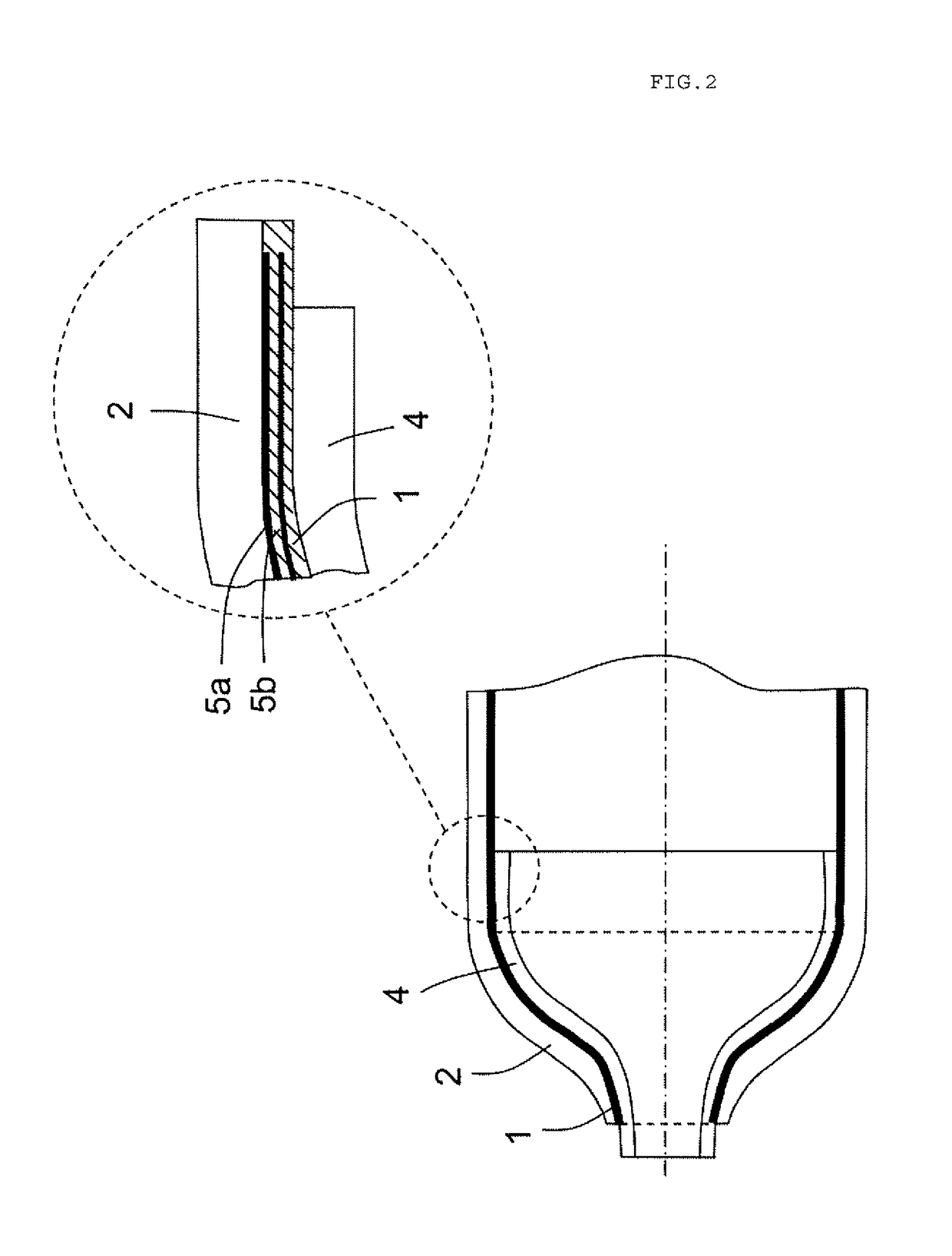Self-monitoring composite vessel for high pressure media
a composite vessel and high pressure technology, applied in the direction of rigid pipes, vessel walls, vessel geometry/arrangement/size, etc., can solve the problems of gas loss, additional parts that need to be fixed, extra cost and fabrication steps, etc., and achieve the effect of a greater safety margin
- Summary
- Abstract
- Description
- Claims
- Application Information
AI Technical Summary
Benefits of technology
Problems solved by technology
Method used
Image
Examples
Embodiment Construction
[0032]FIG. 1 shows preferred embodiments for the liner material construction. Six examples of possible liner material combinations are given. For each of the following descriptions, ‘polymer’ refers to polymer or copolymer material. In FIG. 1a, a pure piezoelectric polymer film such as PVdF and its copolymers is depicted. In FIG. 1b a piezoelectric polymer matrix such as PVdF and copolymers of PVdF containing high aspect ratio particles, for instance high aspect ratio clay platelets is shown, as a method of improving mechanical properties and increasing resistance to permeation. FIG. 1c shows a polymer matrix containing piezoelectric ceramic particles such as PZT or barium titanate particles. In this case, the piezoelectric functionality is provided by the piezoelectric ceramics, and the majority of the barrier functionality is due to the polymer matrix. FIGS. 1d-f show the embodiments presented in FIGS. 1a, 1b and 1c with an additional multi-layer coating to enhance barrier propert...
PUM
| Property | Measurement | Unit |
|---|---|---|
| thick | aaaaa | aaaaa |
| thick | aaaaa | aaaaa |
| thickness | aaaaa | aaaaa |
Abstract
Description
Claims
Application Information
 Login to View More
Login to View More - R&D
- Intellectual Property
- Life Sciences
- Materials
- Tech Scout
- Unparalleled Data Quality
- Higher Quality Content
- 60% Fewer Hallucinations
Browse by: Latest US Patents, China's latest patents, Technical Efficacy Thesaurus, Application Domain, Technology Topic, Popular Technical Reports.
© 2025 PatSnap. All rights reserved.Legal|Privacy policy|Modern Slavery Act Transparency Statement|Sitemap|About US| Contact US: help@patsnap.com



